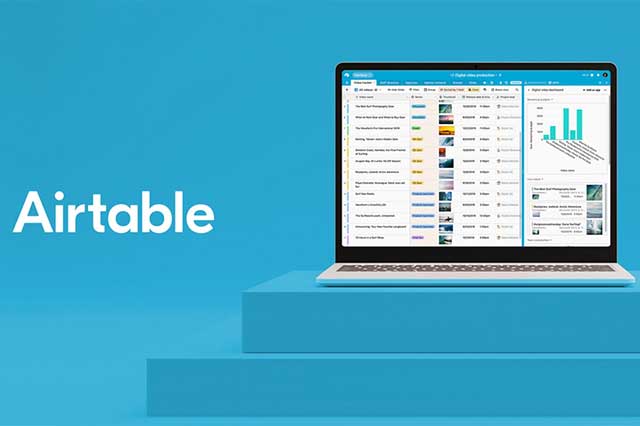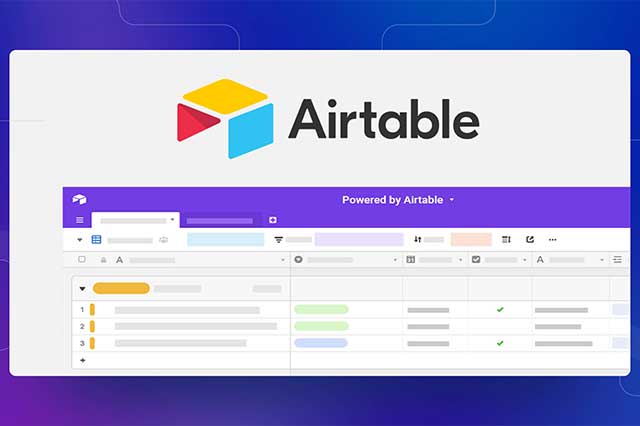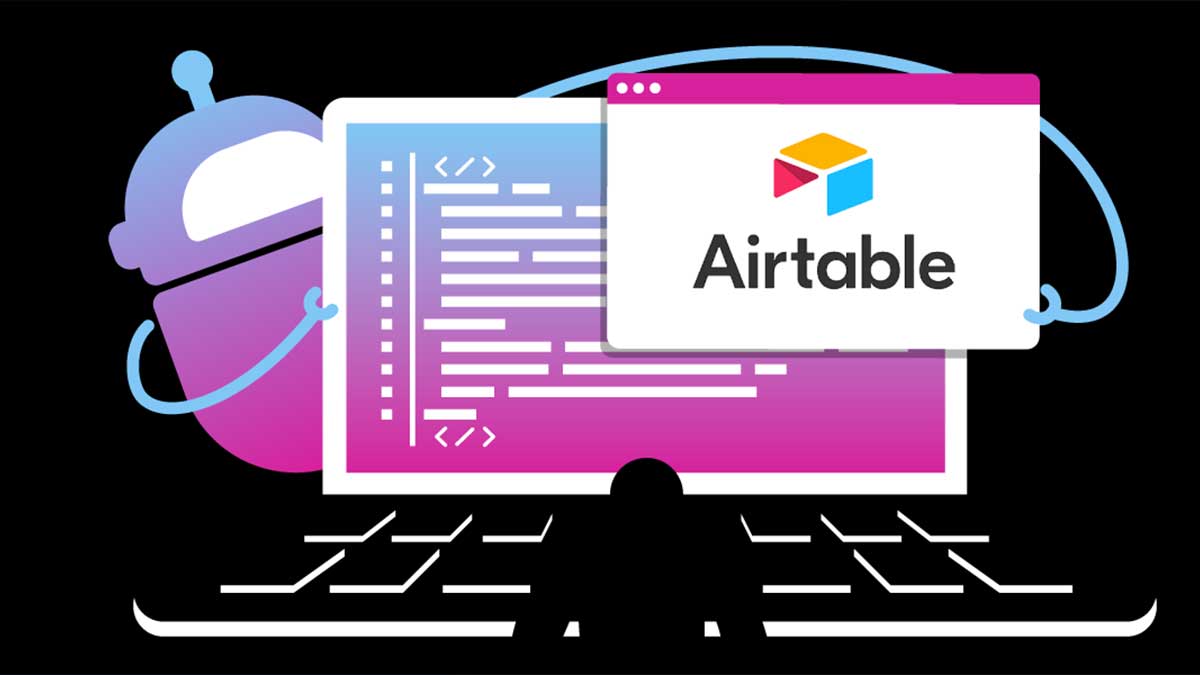Have you considered Make vs Airtable when opting for the best project management software? Project managers are familiar with project management software. Project management software helps make it simple to design projects, assign tasks, and manage teams so that goals and deadlines are reached. With several project management solutions on sale today, selecting the best one for your requirements can take time and effort.
The two-project management software in content today is Make vs Airtable. Airtable functions like a spreadsheet but provides the capacity of a database for organizing anything. However, Make is a workflow automation software with widespread acceptance from several project managers.
In this Make vs Airtable article, we will explore everything you need to know about both software, including its features, benefits, and pricing. It’s the best Airtable vs Make comparison article online today.
Introduction of Make (Integromat)
In business process automation and integration, Make is a strong and adaptable automation platform that has grown significantly in popularity. Integromat helps people and companies optimize workflows, integrate apps and services, and streamline repetitive tasks thanks to its user-friendly interface and powerful features.
Integromat allows customers to build complicated workflows while saving time and effort and increasing overall productivity by integrating diverse applications and services. You can design processes with a few mouse clicks using a GUI-based interface.
Make Features
Like Zapier, Make provides triggers, actions, and multi-step integrations. Nevertheless, the comparison of Integromat vs Zapier goes beyond these fundamental components. It has the positioning of a logic and no-code API tool. Here are the standout characteristics.
Visual routing
You can use a “visual routing” feature to monitor the data flow between your integrations. Anyone who has worked with an email integration product like ActiveCampaign or ConvertKit would be familiar with this feature. Make offers routing features to branch the integration’s phases, asynchronous delays, and data storage to preserve the integration’s result for later manipulation within the visual routing.
Iterators

Another idea taken from the coding realm is Make’s Iterators. They consist of a simple loop where a task continues until a goal is reached. The Make team list is used as an example for storing email attachments. The email is “iterated” (repeatedly) until all attachments have been processed.
Data parsing
You can extract data from numerous sources, including XML files, webpages, and JSON files, using the Integromat data parsing feature. The information can be kept in several formats, such as SQL databases and CSV files.
Data storage
You can do delayed, aggregated calculations thanks to the incredibly feature of data storage. To give consumers time to respond, you could survey your audience and keep the results in data storage for a week. After that, the average response might be determined and sent to your channel on Slack when all the responses have been received.
Data manipulation
To format dates, retrieve numbers from strings, and do other tasks, Make provides a variety of data manipulation features. This is the precise, sophisticated functionality you need to calculate something on the data you are automating. For malfunctions to work well, there is a slight learning curve. You’ll, however, immediately grasp it If you have ever created a formula in Excel.
Benefits of Make
Make is a complete and dynamic alternative for automation needs thanks to its ability to integrate more than 750 apps and services. Make provides various connections, catering to various business requirements, ranging from well-known programs like Google Sheets, Gmail, and Slack to specialist solutions like HubSpot and Trello. The platform serves as a link between several programs, enabling seamless data transfer between them.
The straightforward visual builder offered by Integromat, allowing automation even for those with little or no coding experience, is one of its distinctive features. By dragging and dropping modules, users may quickly create automated workflows or “scenarios.” Each scenario comprises interconnected components where it is easy to design data inputs, modifications, and outputs.

Alongside basic automation, Make provides sophisticated tools like aggregators, filters, and routers that allow users to fine-tune their workflows and change data following predefined criteria. Businesses may create automation systems that are specifically tailored to their own needs, thanks to this level of flexibility.
The real-time capabilities of Make are yet another appealing benefit of the system. Integromat initiates operations in real-time when certain events take place, unlike conventional automation solutions that work on a set schedule. As a result, data is quickly synchronized across all connected apps, lowering latency, and increasing responsiveness.
Make Pricing
As your needs expand, be sure the pricing is fair and grows with you. It’s worth examining whether your demands are complex enough or you’re seeking to save money, even if it has a steeper learning curve than Airtable automation vs Make automation.
Make offers four programs, one of which is a freemium one.
- Free: With its free plan, you can use Make’s most popular apps, visual workflow builder, and unrestricted users. A single action in your workflow counts as one operation, and you are only permitted 1,000 operations per month.
- Core: This package allows you to access limitless active scenarios and API endpoints, starting at $9 monthly for 10,000 users.
- Pro: The first monthly cost for 120,000 operations is $16. Additionally, you can purchase high-priority scenario execution, full-text execution log search, and operations top-ups.
- Teams: This package, which starts at $29 per month for 12,000 operations, allows you additional control over the roles and privileges within your team.
Make also offers an Enterprise package, which is concerned with security issues and applications crucial for enterprises of that size.
Airtable (Introduction)

Any team can use Airtable to power their most important and distinctive workflows by allowing them to build applications based on shared data. The Airtable Connected Apps Platform helps teams with over 300,000 enterprises, especially 80% of the Fortune 100, link their people and data and accomplish their most crucial objectives.
Although Airtable initially resembles a spreadsheet, it’s now considerably more advanced. Its building blocks allow teams to adjust views for their work expressly, define relationships between items, and represent the things they work on. Teams can modify their applications using Airtable if markets or objectives change. It improves agility by giving managers and collaborators access to openness and visibility.
Features of Airtable
The capacity to import current projects
When comparing the pace and accuracy of other leading project management software, Airtable’s import engine is the same. Most platforms require some reconciliation following import to ensure that the data already there complies with the platform’s requirements; however, Airtable recognized every field right away and required no extra activity before proceeding.
To manage project data, there are various sorts of project views
You can alter how you view project data with a few options to generate alternative viewpoints. These options include a traditional grid, calendar, kanban-style board, Gantt chart, and task gallery. The Grid view is a well-known spreadsheet-style user interface where columns reflect data like progress or deadline, and associated rows represent essential items like tasks, ideas, and clients.
Spending Monitoring
For people and companies wishing to simplify their expenditure tracking procedures, Airtable’s expense tracking template is an excellent resource. It stands out as a substitute for Google Sheets or spreadsheets, making tracking tiny and significant expenditures more straightforward.
Adaptable Templates
Airtable provides pre-built, ready-to-use templates with customizable fields and features designed for certain projects, industries, or workflows. Users can readily modify these templates to meet their unique requirements, including adding or removing fields, modifying the design, or connecting with other apps.
Numerous Extensions

Airtable users of all plans have access to plugins, with the condition that each plan limits the number of extensions you can utilize. However, the extensions are diverse and potent. You’ll discover everything from analytical features to time-tracking capabilities, relationship management tools, and an advanced calendar view. You can select what you require to make Airtable function for you.
Benefits of Airtable
The whole list of Airtable benefits might be too extensive for this post, as each block has a vast list of potential benefits. Considering the most common applications for this technology, we’ve compiled a list of critical benefits that may provide business value to any niche or market:
Views that can be adjusted for different applications
It’s the most frequently noted Airtable advantage in customer reviews. You can view or present data in several ways depending on your objectives and demands. Switching between views is quick and straightforward; you may share views with colleagues or clients.
Interface that is simple to utilize
The UI is simple and easy to use. Although classic spreadsheets have been available for decades, many users still struggle with complex functionality such as filters and formulae. Airtable lowers barriers to adoption by depending on an intuitive interface that requires little to no training to learn and use successfully.
Comprehensive data tracking system
Since Airtable is designed to be used collaboratively, monitoring modifications within separate tables and entries is critical for data integrity. You can track all edits and identify who is doing them using the complete record.
Airtable Pricing
If you hadn’t noticed, many would have been more fascinated than excited when evaluating Make vs Airtable. Although most people like the user experience that Airtable is aiming for, its pricing structure needs to be revised for the market it is trying to reach.
Free
The free plan for Airtable is cost-free for up to five users. With a cap of 1,200 records per table, users can build as many bases as they like. Airtable’s Free plan users receive 2GB of attachment storage, 100 monthly automation runs, and two weeks’ worth of modification and snapshot history.
This package best suits users exploring Airtable to learn more about its features or a team of fewer than five people working on straightforward data-driven tasks.
Plus
When invoiced annually, the Plus plan runs $10 per ticket per month, and when billed monthly, it costs $12 per ticket per month. For businesses wishing to develop connected applications or their unique process, it is perfect for small groups or a sub-team.
The Plus plan, which gives up to 5GB space for attachments in contrast to the free plan’s 2GB storage, allows up to 5,000 data per base, up to six months of revisions and snapshot history, and up to 5,000 data per base. It also offers basic customization by enabling customers to design unique forms with their own branding. The initial response time for customer service for the Plus plan is 24 hours.
Pro
The Airtable Pro plan runs $20 per month when billed annually or $24 per seat per month when paid monthly. This plan is ideal for midsize organizations because it provides more significant numbers of records per base (50,000) than the lower-tier options.
It offers Gantt chart and timeline views, in addition to personal and closed views, which allow creators to hide their base from other collaborators by default, and sections views, which allow users to categorize their views in the sidebar. This plan provides customers with immediate accessibility to new Airtable capabilities in addition to field and table modification approvals.
Enterprise
Airtable’s Enterprise plan cost should be advertised on the company’s website. For tailored quotes, prospective purchasers need to reach their sales team.
This model is appropriate for large enterprises that employ thousands of people. It provides users with more storage than previous levels, with attachment space of up to 1,000GB. The support team for the Enterprise plan responds in 12 hours.
Make vs Airtable: Which is best for workflow automation?
If your workflow requires straightforward, one-way automation, Make vs Airtable is also an excellent choice. From the Make vs Airtable pricing, you can rely on Make’s free plan, up to a degree, if you want to avoid shelling out for Airtable’s more costly plans and professional applications.
Nevertheless, what happens when that is insufficient?
Simple one-way automations have both an advantage and a drawback, though. The relationship between the tools can be easily automated, but that’s where the relationship begins. You must create new automation for every field you desire to update if you want changes made on one side to appear on the other.
FAQs
Why Make is different from Airtable?
Make is much more versatile than Airtable. For instance, from several Make vs Airtable examples, it is evident that Make has an entire library of tools and functions that allow you to edit your data in manners that Airtable does not.
What are the cons of Airtable?
If you’re searching for a tool for managing projects on a limited budget, there may be more suitable choices than Airtable software. This software can be pricey, especially if you wish to use its more advanced capabilities.
What are the pros of Make?
When it comes to setting together a workflow, it has a fantastic user experience. The user interface makes it enjoyable while also making complex procedures simple to set up. There are no router limits, modules may be readily duplicated, troubleshooting is simple, and support is excellent.
Why do people love using Make?
It allows anyone to link applications and exchange data without needing to code.
Why use Make over Airtable?
Make can be more cost-effective than Airtable because it enables processes and enables you to develop more complicated processes.

